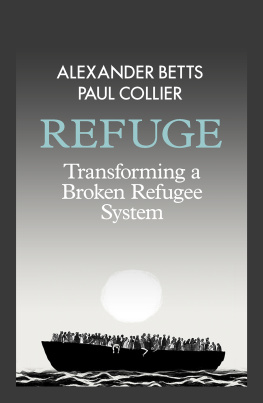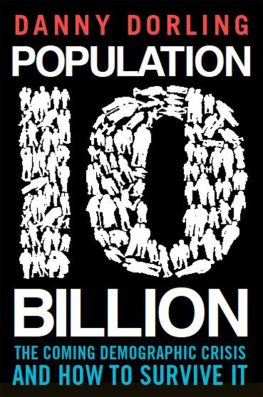The Bottom Billion
The Bottom Billion
Why the Poorest Countries Are Failing and What Can Be Done About It
PAUL COLLIER


Oxford University Press, Inc., publishes works that further Oxford Universitys objective of excellence in research, scholarship, and education.
Oxford New York
Auckland Cape Town Dar es Salaam Hong Kong Karachi
Kuala Lumpur Madrid Melbourne Mexico City Nairobi
New Delhi Shanghai Taipei Toronto
With offices in
Argentina Austria Brazil Chile Czech Republic France Greece
Guatemala Hungary Italy Japan Poland Portugal Singapore
South Korea Switzerland Thailand Turkey Ukraine Vietnam
Copyright 2007 by Paul Collier
Published by Oxford University Press, Inc.
198 Madison Avenue, New York, New York 10016
www.oup.com
First issued as an Oxford University Press paperback, 2008
Oxford is a registered trademark of Oxford University Press
All rights reserved. No part of this publication may be reproduced, stored in a retrieval system, or transmitted, in any form or by any means, electronic, mechanical, photocopying, recording, or otherwise, without the prior permission of Oxford University Press.
Library of Congress Cataloging-in-Publication Data
Collier, Paul.
The bottom billion: why the poorest countries are failing and what
can be done about it / by Paul Collier.
p. cm.
ISBN 978-0-19-531145-7; 978-0-19-537338-7 (pbk.)
1. PoorDeveloping countries. 2. PovertyDeveloping countries I. Title.
HC79.P6C634 2007
338.90091724dc22 2006036630
5 7 9 8 6 4
Printed in the United States of America
on acid-free paper
For Daniel: his world
Contents
Preface
I WAS A STUDENT at Oxford in 1968. I remember joining something called the Oxford Revolutionary Socialist Students, a name now beyond parody. But it all seemed simple then. When I graduated I wanted to put my knowledge of economics to use in Africa. Africas new countries were ill-equipped, and scarcely any Africans had received the sort of education I had just been through. At the time many Oxford students had family connections with Africa, as their fathers had been colonial administrators. Not in my casemy father was a butcher in Yorkshire. But some of those colonial connections must have rubbed off on me: the father of my friend had been the governor general of a little country called Nyasaland, and so I read up on it. What I read made me resolve to go there. Renamed Malawi, it was the poorest country on the continent. It is easier to rename countries than to change them: thirty-five years later it is still as dirt poor as it was then. In another thirty-five years I doubt it will be much different, unless This book is about that unless.
Malawi hasnt changed much in the last thirty-five years, and in one sense neither have I: Im still working on Africa, now as a professor at Oxford. In between Ive been a professor at Harvard, and directed the World Banks research department, where I was brought in by Joe Stiglitz to strengthen its focus on the poorest countries. Indeed, my first assignment for the World Bank was to go with Joe to Ethiopia. Since I had just married, the trip was my honeymoon, but with Joe instead of my wife. Fortunately, she was understandingwhether by coincidence or the attraction of like minds, after university she had worked in Malawi.
This book is about the Malawis and the Ethiopias of this world, the minority of developing countries that are now at the bottom of the global economic system. Some, such as Malawi, have always been at the bottom. Others, including Sierra Leone, once were less poor than India or China. The countries now at the bottom are distinctive not just in being the poorest but also in having failed to grow. They are not following the development path of most other nations; they are adrift. As once-poor India and China, and countries like them, surged ahead, the global poverty picture has been confused, concealing this divergent pattern. Of course, for some countries to do relatively better, others must do relatively worse. But the decline of the countries now at the bottom is not just relative; often it is absolute. Many of these countries are not just falling behind, they are falling apart.
For the past few years much of my work has been on civil war. I wanted to understand why conflict was increasingly concentrated in low-income Africa. Gradually, I developed the notion of the conflict trap. It shows how certain economic conditions make a country prone to civil war, and how, once conflict has started, the cycle of violence becomes a trap from which it is difficult to escape. I realized that the conflict trap was one explanation for the countries now at the bottom of the world economy. But it was not the whole story. Malawi has been conflict-free for its entire postindependence history, yet it still has not developed. Neither have Kenya and Nigeria, countries on which at different stages in my career I wrote books, and which looked neither like Malawi nor like each other. Nor do I believe that poverty itself is a trap. These development failures occurred against a backdrop of global development successpoverty is something that most people are managing to escape. Since 1980 world poverty has been falling for the first time in history. Nor was it just a matter of Africa. Elsewhere there were also development failures: countries such as Haiti, Laos, Burma, and the Central Asian countries, of which Afghanistan has been the most spectacular. A one-size-fits-all explanation for development failure doesnt ring true against such diversity.
Part of the reason single-factor theories about development failure are so common is that modern academics tend to specialize: they are trained to produce intense but narrow beams of light. However, in my career I have written books on rural development, labor markets, macroeconomic shocks, investment, and conflict. And for a while I was working for Joe Stiglitz, who really was interested in everything and had something ingenious to say about much of it. This breadth has its advantages. Eventually I came to see that four distinct traps explain the countries now at the bottom. Between them they account for around a billion people. If nothing is done about it, this group will gradually diverge from the rest of the world economy over the next couple of decades, forming a ghetto of misery and discontent.
The problems these countries have are very different from those we have addressed for the past four decades in what we have called developing countriesthat is, virtually all countries besides the most developed, which account for only one-sixth of the earths people. For all this time we have defined developing countries so as to encompass five billion of the six billion people in the world. But not all developing countries are the same. Those where development has failed face intractable problems not found in the countries that are succeeding. We have, in fact, done the easier part of global development; finishing the job now gets more difficult. Finish it we must, because an impoverished ghetto of one billion people will be increasingly impossible for a comfortable world to tolerate.
Unfortunately, it is not just about giving these countries our money. If it were, it would be relatively easy because there are not that many of them. With some important exceptions, aid does not work so well in these environments, at least as it has been provided in the past. Change in the societies at the very bottom must come predominantly from within; we cannot impose it on them. In all these societies there are struggles between brave people wanting change and entrenched interests opposing it. To date, we have largely been bystanders in this struggle. We can do much more to strengthen the hand of the reformers. But to do so we will need to draw upon toolssuch as military interventions, international standard-setting, and trade policythat to date have been used for other purposes. The agencies that control these instruments have neither knowledge of nor interest in the problems of the bottom billion. They will need to learn, and governments will need to learn how to coordinate this wide range of policies.
Next page









